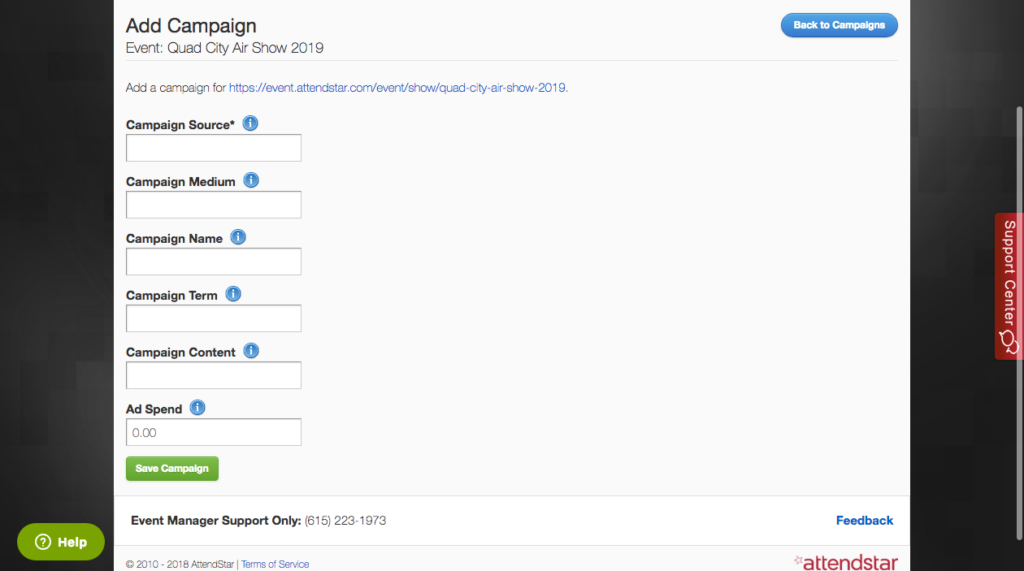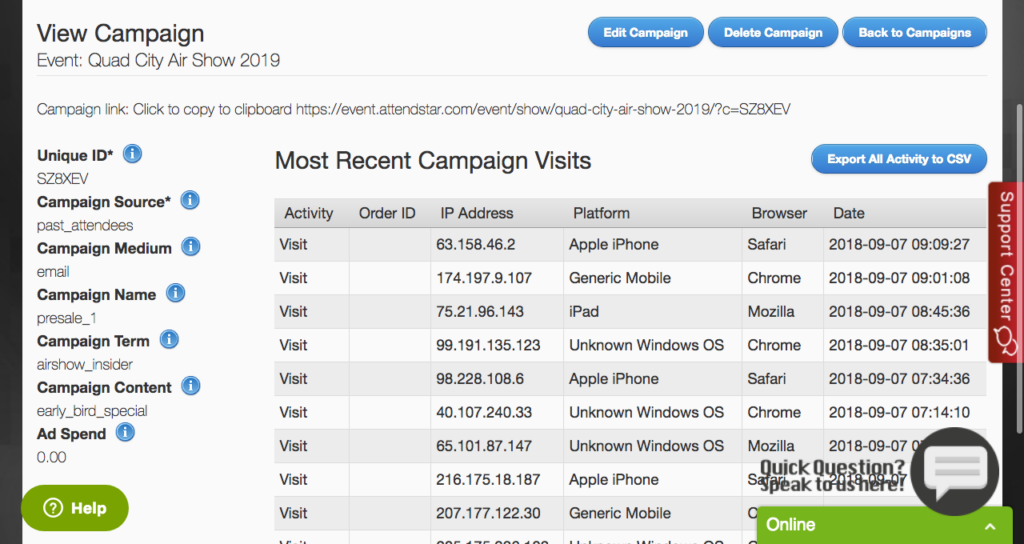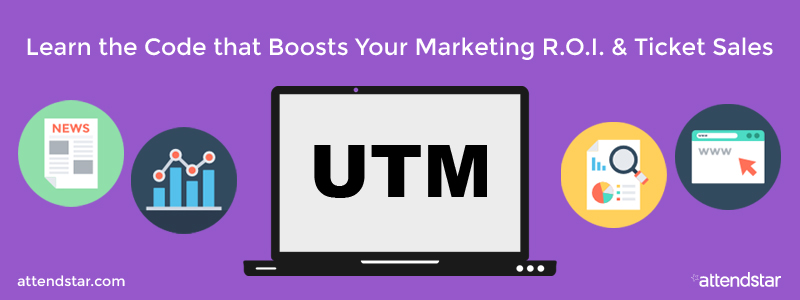Peter Drucker, one of the greatest marketing minds around, once said, “what gets measured gets managed.” So, if you’re not tracking how each of your marketing and advertising investments are driving the ticket sales for your event, you’re wasting money and losing sales… it’s that simple.
Now, if this sounds really complicated, you’re right. Until recently, event marketers had to use multiple tools and multiple platforms to create and track each individual ad and marketing investment. They’d need a platform-specific tool to create a platform specific UTM code (a UTM code is a snippet of simple code that you can add to the end of a URL to track the performance of campaigns and content that we will explain in more detail later) and they’d need to integrate these individual UTMs with their Google Analytics account where they’d have to create different goals to track performance.
Unless you’re a programmer (and even then it is a time-consuming task) the process of setting up multiple tools can be confusing, plus you then have the added headache of working through the complexity of Google Analytics…
Fortunately, for event marketers, there is a solution! AttendStar has created a proprietary UTM system that can track all your marketing directly within the ticket sales platform!
Now, before we dive into all of the things you can do with UTMs through the New AttendStar dashboard, let’s back up a bit for a brief (non-programmer) overview of what UTMs are and how they can help your event marketing results.
So, what is a UTM?
UTM is an acronym that stands for Urchin Tracking Model. In simplest terms, a UTM is a snippet of text added to the end of a URL. When people click on a link with a UTM parameter, data is passed to Google Analytics (and now to AttendStar).
You can use that data to track where people who clicked on your links came from, what they clicked, how they interacted with your website, and which marketing investments are delivering the highest return on your investments (ROI).
For example, imagine you’re selling tickets for a concert and advertise those tickets through a Facebook ad, Instagram ad, banner ad placed on multiple websites, and email marketing message. Without using UTMs, you would be limited to what performance data you could track in Google Analytics. You wouldn’t know how many people clicked on which ad, and you wouldn’t know if each advertising investment is making you money or causing you to lose money!
On the other hand, when you add UTMs to each of your promotional links, you can track exactly where each lead or sale came from and use that data to adjust your ad spending to boost your ROI. Rather than simply identifying the referrer or source of a click, you can also identify the specific campaign and content that generated the click when you use UTMs. Think of it this way – if you’re running A/B split tests to determine which banner ad creative is most effective, this type of information is critical to your success.
If you’re a programmer who would like to understand the exact process and steps required to put together your own UTM Event Strategy and then organize and create all the individual UTMs necessary to conduct a campaign, check out: A Guide to Implementing UTMs on Your Own
But, if you’d prefer the 30,000 foot overview like most of us, here it is:
Once you have learned how to create UTM links, you will need to create an individualized link for each ad and marketing platform. Then, you will then need to set-up a Google Analytics account and go inside it to set-up goals and reports for each of your UTM links. If done properly, this will allow you to track the performance of your marketing investments.
However, if you use AttendStar to sell your event tickets, you can access all this information from within your AttendStar dashboard. You can also then automatically generate your UTMs using the form shown above and navigate to the Campaigns page for each of your events to view all of your campaigns as shown in the image below.

From this page, you can click the specific campaign you want to analyze, and the View Campaign page will open for each campaign as shown in the image below.

Here you can view all of your campaign data. Just click any of the items from the left side of the page (e.g., Campaign Source, Campaign Medium, etc.), and you can track clicks, sales, ROI, and more based on each item. You can also export your data to use in any other tools or spreadsheets that you want. In addition, you can create partner or affiliate links to share sales revenue.
Other ticketing platforms require that you use multiple tools to access and analyze UTM and campaign data, but AttendStar integrates everything in one place to save you time and make things easier for you. Using the UTM feature takes almost no set up, so event marketers can finally track ROI without logging into Google Analytics, which can be time-consuming and daunting.
PLUS, the new AttendStar Client Success Team will help you monitor your data behind the scenes and help you improve your results at any time. AttendStar wants your events to be successful, and offering these new features and reports is just one more way to do it.
If you want to learn more about UTMs and reporting in the AttendStar ticketing platform or want to learn more about selling tickets through AttendStar, call 615-223-1973 or fill out the contact form to get started.


